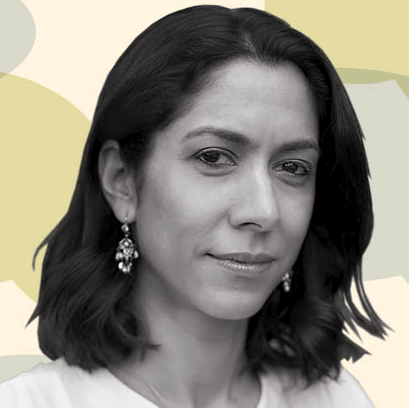Kavita Puri's hidden histories: "There are other medieval women who we can bring to the foreground"
Kavita Puri explores lesser-known stories from our past

I’m ashamed to say that, until now, I have never once thought of the women who embroidered the Bayeux Tapestry: who they were, what their lives were like, or how it simply would not exist without their skill and creativity. We might, perhaps, never know much about their stories, but there are other women from the Middle Ages we can learn about and bring into the foreground. Indeed, in her book Femina: A New History of the Middle Ages through the Women Written Out of It (WH Allen), Oxford lecturer Janina Ramirez shifts the focus on the Middle Ages, adjusting the frame to the female, rather than male, characters.
Hildegard, for instance, was a 12th-century nun from Rhineland who wrote theological works, two scientific treatises, and the first morality play; she also composed music and even invented her own language. Margery Kempe, from late 14th-century Bishop’s Lynn (now King’s Lynn), was an ordinary married woman, and mother to at least 14 children, who wrote what is believed to be the first English autobiography.
Women talk about things we do not often hear about when we think of the Middle Ages: the fear and pain of childbirth, not desiring their husbands, and herbal remedies for abortion. A handful left written records, and we must try and piece together their lives from fragments of evidence. One of the many fascinating elements of Ramirez’s excellent book is the way in which modern technology is allowing us to reassess the past. A Viking grave at Birka in Sweden, where there had been a settlement from 750 to 950 AD, has recently revealed new secrets thanks to research at Stockholm University.
- Read more about the lives of Viking women
One burial included an axe, a quiver of arrows, spears and a sword, as well as gaming pieces, which were used to allow social bonding and encourage diplomacy. For two centuries, archaeologists assumed the bones to be male because of the “masculine” objects. Yet the new research disputed that. Across every sample, the pattern was the same: two X chromosomes. This was a female skeleton. The discovery raised the possibility, which has since been much debated, that this could have been an early Viking female warrior.
Thousands of Viking graves have been dug up in the past 200 years, and labelled male or female depending on the objects found alongside the bones. But because of the Birka find, historians are returning to the evidence. More bones are being analysed, and a more nuanced discussion about the role of Viking women is starting to evolve.New technology has also shaped our understanding of medieval London. During the mid-1980s, 20,000 square metres of burial was uncovered in a site near the Tower of London. It was the first established Black Death cemetery, from which the bones of 634 people were excavated. Nearly 40 years later, Dr Rebecca Redfern from the Museum of London and Dr Joseph Hefner from Michigan State University examined the bones of 41 of the people using an array of methods, including forensic analysis, facial measurements, ancient DNA genome sequencing and stable isotype analysis – the last of which measures the chemicals laid down over time in teeth and bones.
Of the 41 people, 19 were female, and three of these women were of African descent. The skeleton of one of the women of African descent was searched for clues about her life. She was aged between 36 and 45, had osteoarthritis in her spine, and rotator cuff disease to her left shoulder. As Dr Redfern explains, “both conditions could have been caused by manual repetitive labour... it provides an insight into her lived experience, suggesting that her life, like many other women in the period, involved much manual labour.”
There are, however, still gaps in our knowledge. As Ramirez puts it, “whether she was enslaved or free, impoverished or wealthy is impossible to determine from the bones alone”. We are not sure how this woman ended up in London – but what we do know is that, thanks to the latest technology, evidence shows that women of African descent were part of the make-up of medieval London.
More like this
Recent finds like these are making us re-evaluate the Middle Ages, ask questions, reassess the evidence that exists, and write back into the story people who have so often been overlooked.
This article was first published in the August 2022 issue of BBC History Magazine
Authors

From the makers of HistoryExtra, try 6 issues of BBC History Magazine or BBC History Revealed for just £9.99 + FREE access to HistoryExtra (including ad the free Podcast) worth £34.99.





